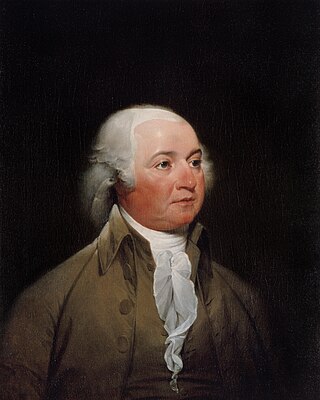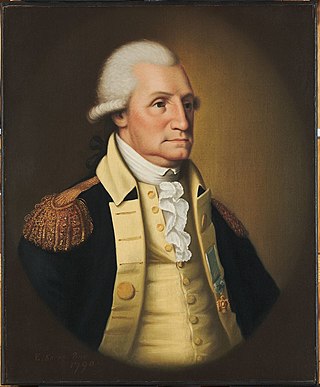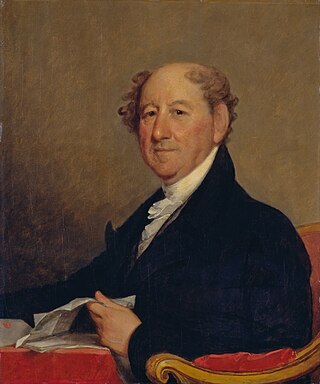See also
Lists related to the presidents and vice presidents of the United States | |||||
|---|---|---|---|---|---|
| Presidents | |||||
| Vice presidents | |||||
| Succession | |||||
| Elections | |||||
| Candidates |
| ||||
Below is a list of major party United States presidential candidates who lost their birth or resident states. While many successful candidates have won the presidency without winning their birth state, only four (James K. Polk, Woodrow Wilson, Richard Nixon and Donald Trump) have won election despite losing their state of residence. Nixon, a lifelong Californian, had taken residence in New York after his failed run for governor of California, but later switched back during his presidency and ahead of his reelection.
| Election year | Name | Party | State of birth | State of residence | ||||
|---|---|---|---|---|---|---|---|---|
| State | Result | Margin | State | Result | Margin | |||
| 1832 | Andrew Jackson | Democratic | South Carolina | Lost | N/A | Tennessee | Won | 90.84% |
| 1840 | William Henry Harrison | Whig | Virginia | Lost | –1.3% | Ohio | Won | 8.53% |
| 1844 | James K. Polk | Democratic | North Carolina | Lost | –4.78% | Tennessee | Lost | –0.10% |
| 1848 | Zachary Taylor | Whig | Virginia | Lost | –1.60% | Louisiana | Won | 9.18% |
| 1860 | Abraham Lincoln | Republican | Kentucky | Lost | –44.3% | Illinois | Won | 3.5% |
| 1864 | Abraham Lincoln | Republican | Kentucky | Lost | –39.6% | Illinois | Won | 8.8% |
| 1916 | Woodrow Wilson | Democratic | Virginia | Won | 35.16% | New Jersey | Lost | –11.72% |
| 1968 | Richard Nixon | Republican | California | Won | 3.08% | New York | Lost | –5.46% |
| 1988 | George H. W. Bush | Republican | Massachusetts | Lost | –7.85% | Texas | Won | 12.60% |
| 2000 | George W. Bush | Republican | Connecticut | Lost | –17.47% | Texas | Won | 21.32% |
| 2004 | George W. Bush | Republican | Connecticut | Lost | –10.36% | Texas | Won | 22.87% |
| 2016 | Donald Trump | Republican | New York | Lost | −22.49% | New York | Lost | −22.49% |
Only candidates who won at least one state (most of them not having necessarily won their birth States and most of the others not having necessarily won their resident states) in the general elections are listed here.

The Federalist Party was a conservative American political party and the first political party in the United States. As such, under Alexander Hamilton, it dominated the national government from 1789 to 1801. Defeated by the Jeffersonian Republicans in 1800, it became a minority party while keeping its stronghold in New England and made a brief resurgence by opposing the War of 1812. It then collapsed with its last presidential candidate in 1816. Remnants lasted for a few years afterwards. The party appealed to businesses and to conservatives who favored banks, national over state government, manufacturing, an army and navy, and in world affairs preferred Great Britain and strongly opposed the French Revolution. The party favored centralization, federalism, modernization, industrialization, and protectionism.

The 1796 United States presidential election was the third quadrennial presidential election of the United States. It was held from Friday, November 4 to Wednesday, December 7, 1796. It was the first contested American presidential election, the first presidential election in which political parties played a dominant role, and the only presidential election in which a president and vice president were elected from opposing tickets. Incumbent Vice President John Adams of the Federalist Party defeated former Secretary of State Thomas Jefferson of the Democratic-Republican Party.

The 1800 United States presidential election was the fourth quadrennial presidential election. It was held from October 31 to December 3, 1800. In what is sometimes called the "Revolution of 1800", the Democratic-Republican Party candidate, Vice President Thomas Jefferson, defeated the Federalist Party candidate, incumbent president John Adams. The election was a political realignment that ushered in a generation of Democratic-Republican leadership.

The 1804 United States presidential election was the fifth quadrennial presidential election, held from Friday, November 2, to Wednesday, December 5, 1804. Incumbent Democratic-Republican president Thomas Jefferson defeated Federalist Charles Cotesworth Pinckney of South Carolina. It was the first presidential election conducted following the ratification of the Twelfth Amendment to the United States Constitution, which reformed procedures for electing presidents and vice presidents.

The 1808 United States presidential election was the sixth quadrennial presidential election, held from Friday, November 4, to Wednesday, December 7, 1808. The Democratic-Republican candidate James Madison defeated Federalist candidate Charles Cotesworth Pinckney decisively.

The Society of the Cincinnati is a fraternal, hereditary society founded in 1783 to commemorate the American Revolutionary War that saw the creation of the United States. Membership is largely restricted to descendants of military officers who served in the Continental Army.

Rufus King was an American Founding Father, lawyer, politician, and diplomat. He was a delegate from Massachusetts to the Continental Congress and the Philadelphia Convention and was one of the signers of the United States Constitution in 1787. After formation of the new Congress, he represented New York in the United States Senate. He emerged as a leading member of the Federalist Party and was the party's last presidential nominee during the 1816 presidential election.

Thomas Pinckney was an American statesman, diplomat, and military officer who fought in both the American Revolutionary War and the War of 1812, achieving the rank of major general. He served as Governor of South Carolina and as the U.S. minister to Great Britain. He was also the Federalist candidate for vice president in the 1796 election.

Charles Cotesworth Pinckney was a Founding Father of the United States, military officer during the Revolutionary War, attorney, planter, and slave owner. A delegate to the Constitutional Convention, Pinckney was a signer of the U.S. Constitution and later served as U.S. Minister to France. He was twice nominated as the presidential candidate of the Federalist Party, in 1804 and 1808, but lost both elections, the first to Thomas Jefferson and the second to James Madison.
In United States politics, balancing the ticket is a practice where a political candidate chooses a running mate, usually of the same party, with the goal of bringing more widespread appeal to the campaign. The term is most prominently used to describe the selection of the U.S. Vice Presidential candidate.
The congressional nominating caucus is the name for informal meetings in which American congressmen would agree on whom to nominate for the Presidency and Vice Presidency from their political party.

The drafting of the Constitution of the United States began on May 25, 1787, when the Constitutional Convention met for the first time with a quorum at the Pennsylvania State House in Philadelphia, Pennsylvania to revise the Articles of Confederation. It ended on September 17, 1787, the day the Frame of Government drafted by the convention's delegates to replace the Articles was adopted and signed. The ratification process for the Constitution began that day, and ended when the final state, Rhode Island, ratified it on May 29, 1790.
The second inauguration of Thomas Jefferson as president of the United States took place on Monday, March 4, 1805 in the Senate Chamber of the United States Capitol. The inauguration marked the commencement of the second four-year term of Thomas Jefferson as president and the first four-year term of George Clinton as vice president. Giving the oath of office was Chief Justice John Marshall.

The 1800 United States presidential election in Pennsylvania took place on December 1, 1800 during a special session of the Pennsylvania General Assembly. Members of the bicameral state legislature chose 15 electors to represent Pennsylvania in the Electoral College as part of the 1800 United States presidential election. Eight Democratic-Republican electors and seven Federalist electors were selected. Unlike in the previous election, when one elector split his ballot between Republican Thomas Jefferson and Federalist Thomas Pinckney, all 15 electors followed the party line, with the Republicans voting for Jefferson and the Federalists for incumbent President John Adams. This was the first and only U.S. presidential election in which Pennsylvania's electors were not chosen by popular vote.

Electoral history of John Adams, who served as the second president of the United States (1797–1801) and the first vice president of the United States (1789–1797). Prior to being president, he had diplomatic experience as the second United States envoy to France (1777–1779), the first United States minister to the Netherlands (1782–1788), and the first United States minister to the United Kingdom (1785–1788). After losing the 1800 presidential election to Thomas Jefferson, he would mostly retire from political life, with his second youngest son, John Quincy Adams (1767–1848), being elected as the sixth President of the United States (1825–1829) in the 1824 presidential election against Tennessee Senator Andrew Jackson.